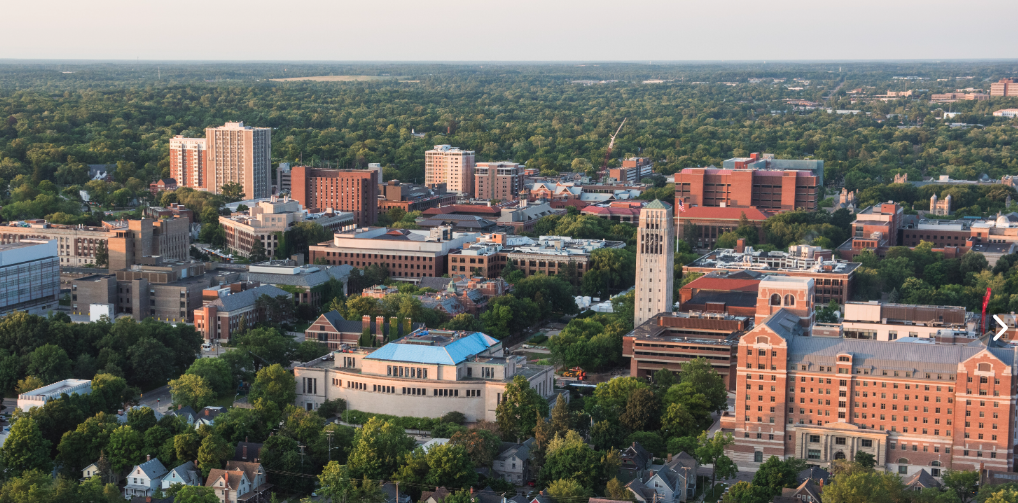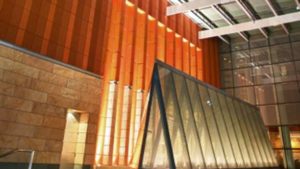The name game
Any visitor to Ann Arbor will tell you that Michigan’s central campus skyline is always changing. Sometimes the cranes appear more ubiquitous than the buildings themselves.
A quick scan of the bricks and mortar reveals a tangible tapestry of dedicated alumni who have long shared the University’s commitment to growth.
New York-based real estate developer Stephen M. Ross, for example, endowed U-M’s business school in 2004 with the largest single gift in the University’s history. At the time, he joked that his goal, in part, was to “one-up” his uncle, Max Fisher, who had previously endowed the business school at Ohio State.
The late Detroit-area businessman William Davidson, whose William Davidson Institute supports global economic research and education, built one of the largest glass suppliers in the world after taking over his family’s bankrupt company in the 1950s. He went on to own multiple sports teams, including the Detroit Pistons.
As undergraduates in the College of Literature, Science, and the Arts in the 1930s, Samuel and Jean Frankel could hardly have envisioned the impact their extended family would one day demonstrate at U-M. The Frankels’ collective commitment can be found at the Frankel Cardiovascular Center, the Frankel Center for Judaic Studies, and the Frankel Wing at the University of Michigan Museum of Art.
And with multiple education alumni in the family, it is fitting that the Michigan Marsal Family School of Education now represents a multi-generational commitment to the role education plays in a just and equitable society.

The Law Quad ranks among the top spots to revisit on returning to campus. Sadly benefactor William W. Cook never made it in person. (Image credit: Michigan Photography.)
The architect/designer credited with popularizing the indoor shopping mall is also the benefactor who endowed the A. Alfred Taubman Health Care Center and U-M’s Taubman School of Architecture and Urban Design. Fellow designer Penny W. Stamps endowed U-M’s school of art and design, memorializing her distinguished career at Herman Miller and Kaplan & Fox Inc., as well as her own Boston-based firm.
Back in the day, Horace H. Rackham, of the Rackham Graduate School, was an initial stockholder in the Ford Motor Co. and the first president of the Detroit Zoological Commission. Elsewhere in the auto industry, Charles Stewart Mott, of the C.S. Mott Children’s Hospital, was a co-owner of General Motors and a two-time mayor of Flint, Michigan.
William W. Cook, benefactor of U-M’s beloved landmark Law School, actually rejected suggestions that the Law Quad be named in his honor, but the University overruled his wish a year after he died.
Other buildings bear the names of past U-M presidents: Tappan Hall, Haven Hall, Angell Hall, Hutchins Hall, the Burton Memorial Tower, the Ruthven Administration Building, the Hatcher Library, the Shapiro Library, the Duderstadt Center, and Mary Sue Coleman Hall. (See Who Was Robben Fleming?) And still others are named for transformative faculty and early deans like Mortimer E. Cooley, a “scientific blacksmith” with a handlebar mustache and a love for cigars, or G.G. Brown, a larger-than-life engineer with a booming voice and authoritative manner. Alice Lloyd, Frances Kelsey, and Helen Newberry each have a story to tell. There’s Ferry and Nichols and Moore, and plenty of others, of course.
As one hustles through the daily rigors of academic life, it’s easy to forget the real people behind the classroom buildings, laboratories, and other creative spaces that animate our world. Remember to give them a nod next time you cross the threshold. Your favorite place might not be there without them.
(Lead image credit: Michigan Photography.)





Patricia Strahota Grimes - 1973
In my freshman year, I lived in Bursley Hall, which was quite new at that time. It was wonderful. All of my classes were on Central Campus, and the busride from North Campus made me feel like I lived in a more rural area. My major had me attending many classes in the old Art and Architecture Building on Central Campus. I’m glad the building and it’s outdoor sculptures are still there, repurposed for another discipline.
Reply
Eric Carlson - 1985
I have many fond memories of campus, and the experiences there. It’s great to hear about the names associated with many of the buildings on campus.
Reply
Todd Frank - 1984 and 1987
Great memories of campus. Awesome article about the dedicated alums that felt so strongly about the U of M.
Reply
Vic Weipert, MSW, JD - BA’61, MSW’65
Elaine and I lived in married student housing on North Campus on Cram Circle and we welcomed first child, Steve in my first year of grad school for my MSW. We were dirt poor and used a dresser drawer for his crib until we were able to get one.
I studied in the large bathroom where there was a washer and gas dryer, which had a gas leak. I was falling asleep in class and thought it was mononucleosis until my mother visited and smelled the gas. We found the leak with some liquid soap and tightened the nut and restored my senses. My next problem was being unable to read the blackboard in class. I needed glasses.
Go BLU !!!
Reply